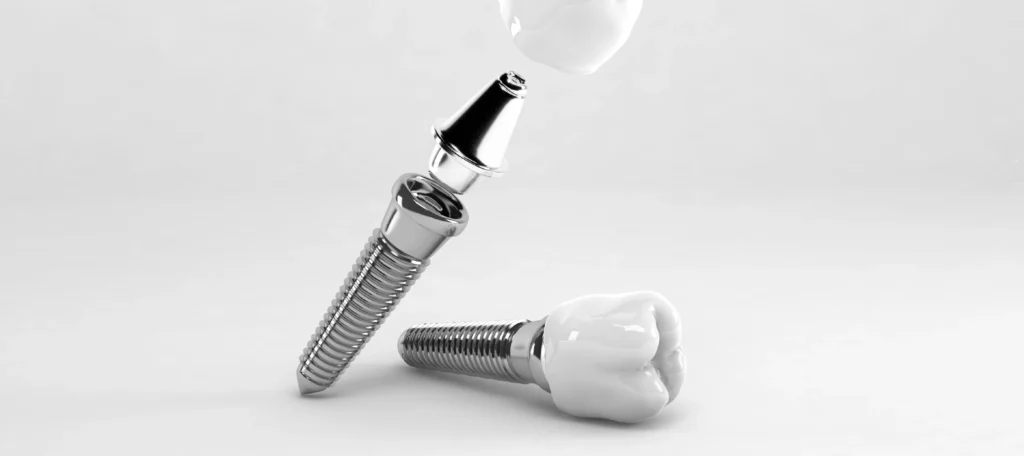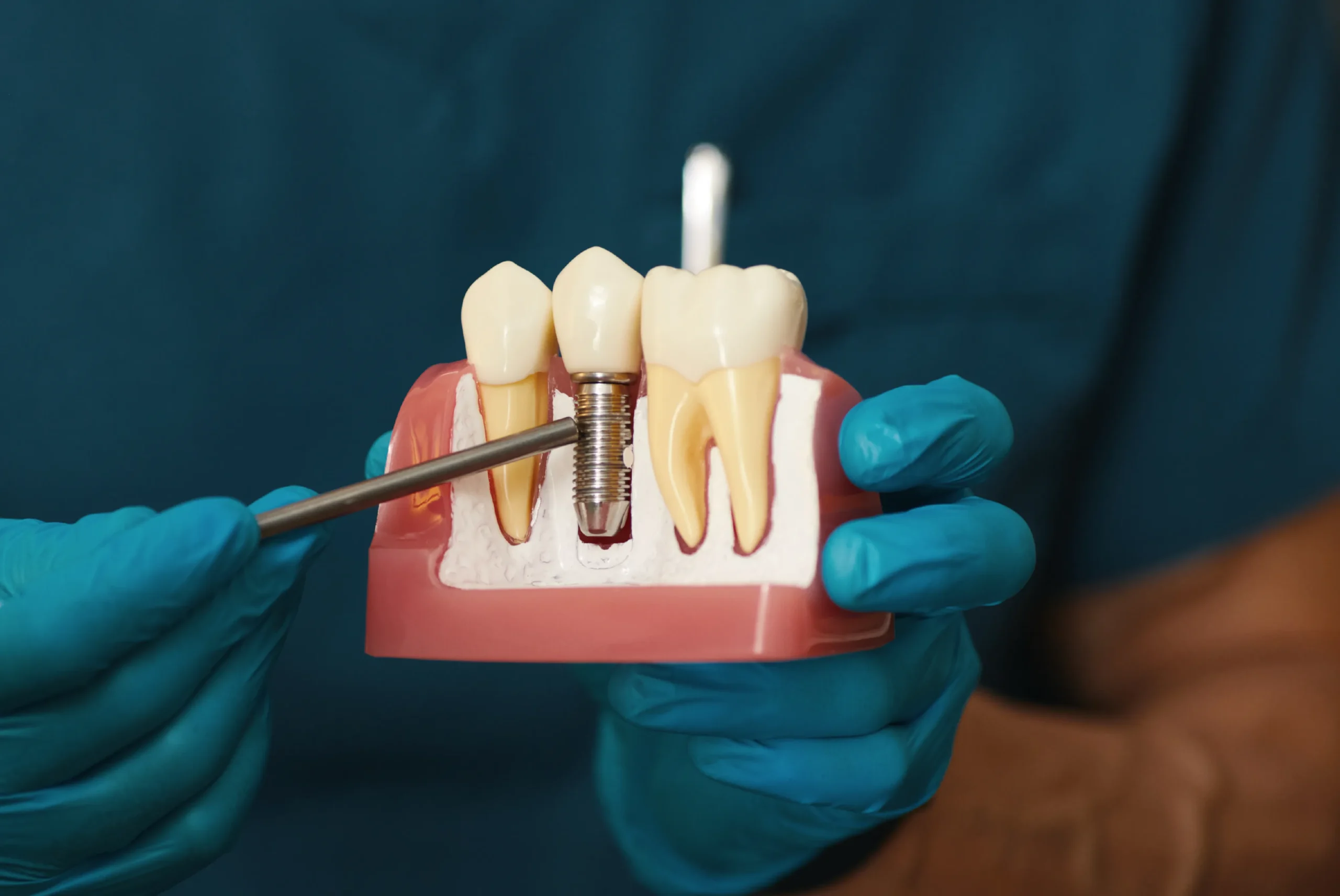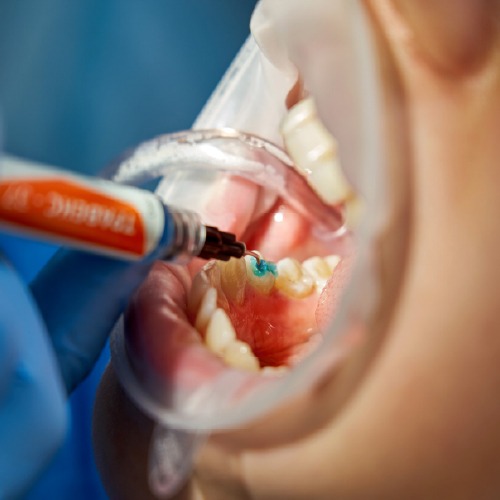A dental implant serves as a synthetic substitute for the natural root of your tooth. It attaches to your jawbone and provides support for an artificial tooth, commonly known as a crown. While it offers numerous advantages, an implant may not be suitable for everyone. Surgically placed under local anesthesia, dental implants are installed in your mouth. The surgical procedure typically lasts around 90 minutes, but the entire process may extend over a period of 6 to 12 months due to the necessity of multiple dental appointments.
Dental implant offers a long-lasting solution for replacing a missing tooth, providing a natural appearance and feel. Nevertheless, they might come with a higher cost compared to alternative options and may not be viable for individuals unable to undergo dental surgery.
Explore the advantages and disadvantages of dental implant in comparison to other dental procedures.
Advantages of Dental Implant
Dental implants are typically highly resilient and closely mimic the appearance and sensation of a natural tooth when capped with a crown. They present numerous advantages in comparison to other available alternatives.
Longevity
The preferred method for addressing missing teeth is the use of a titanium dental implant, considered the gold standard. Dental implants demonstrate prolonged durability, outlasting alternative options, and boast a success rate exceeding 97% over a 10-year period.
In a comprehensive study conducted in 2021, which observed the lifespan of 10,871 implants over a span of 22 years, researchers identified the following rates of implant survival:
- 98.9% at 3 years
- 98.5% at 5 years
- 96.8% at 10 years
- 94.0% at 15 years
As a point of comparison, a 2021 review indicated that complete dentures typically have an average lifespan of 10.1 years. Dental bridges, on the other hand, typically require replacement every 5 to 15 years.
Helps mitigate bone loss
Dental implants can assist in preventing the bone loss that commonly follows tooth loss. Upon losing a tooth, the corresponding section of your jawbone experiences reduced stress. As time progresses, your body breaks down and reabsorbs a portion of the bone tissue in that area.
Several studies have indicated that approximately 30% of the alveolar ridge is lost following tooth loss. The alveolar ridge is the section of the jawbone housing the tooth socket. The majority of bone loss typically occurs within the initial 6 months.
In a 2016 analysis of various studies, scholars discovered evidence suggesting that implants can significantly contribute to alveolar ridge preservation by reducing the rate of bone resorption. Resorption, in this context, refers to the destruction of a substance—in this case, bone—before the body absorbs it.
Authentic appearance and tactile sensation
A dental implant serves as a synthetic root for a tooth. Dentists can affix a crown to the implant, replicating the appearance and sensation of a natural tooth, often providing greater comfort compared to alternatives like dentures.
In a 2016 study conducted in Sweden, it was discovered that 94% of 400 respondents, who completed a mailed questionnaire, expressed sufficient satisfaction with the aesthetics of their dental implant.
Maintains stability in neighboring teeth
When a tooth is missing, adjacent teeth may shift towards the gap, leading to bite and chewing issues. An implant can bridge the gap between your teeth, preserving the health of surrounding teeth by preventing their migration.
Enhances the aesthetic appearance of your facial features
The loss of jawbone following the extraction of a tooth or teeth can alter the contours of your face, potentially resulting in changes such as:
sagging skin
sunken cheeks
hollow appearance
misaligned bite
The alterations in facial features are typically more evident when a significant number of teeth are missing.
Dental implant can aid in averting these changes by preserving the structural integrity of your jaw and preventing bone loss.
Functions like real teeth during speaking and chewing
A dental implant closely replicates the natural teeth during chewing, surpassing traditional dentures or bridges. Additionally, it can contribute to maintaining your speech patterns by filling gaps in your teeth, preventing alterations in the way air passes through your mouth during speech.
Overdentures are artificial teeth connected to one or more implants but can be taken out. In a 2019 investigation, a cohort of 32 individuals experienced enhanced speech quality after being fitted with 5 or 6 mini implants to support overdentures following an adjustment period of 4 months. Some participants encountered slight challenges with “s” sounds post-treatment.
An overdenture is also referred to as an implant-supported denture.
Reinstates biting strength
According to a 2016 study, researchers discovered that implant-supported overdentures for the lower jaw enhance biting force in comparison to conventional dentures.
Enhances the overall quality of life
In a 2019 study, researchers noted zero instances of implant failures during a 3-year follow-up assessment in a group of 98 individuals who had been fitted with implant-supported overdentures. The researchers concluded that implant-supported overdentures could enhance the quality of life with minimal risks and a high rate of implant survival.

Advantages of Dental Implant Compared to Bridges
Dental implant provides certain benefits in contrast to traditional dental bridges, including:
They typically have a longer lifespan.
Their appearance is often more natural.
They generally result in less decay in surrounding teeth.
They do not necessitate damage to surrounding teeth.
Advantages of Dental Implants Compared to Dentures
Dental implants provide certain advantages compared to traditional dentures, including:
They closely mimic the look and feel of natural teeth.
They demand less daily upkeep.
They can offer more comfortable chewing.
They typically have a longer lifespan.
They may contribute to preserving jawbone tissue.
Conclusion
Dental implants are robust dental prosthetics designed to substitute the natural tooth root and can be capped with crowns, dentures, or bridges.
A dental implant presents an option that can yield results characterized by a natural appearance and extended durability. However, it’s essential to acknowledge that the cost associated with dental implants is often higher than alternative treatment options. To determine the most suitable course for your dental needs, consulting with a dentist becomes pivotal. They can assess your specific situation and guide you in making an informed decision, considering factors such as cost, long-term benefits, and overall suitability for your individual circumstances.
A dental implant presents an option that can yield results characterized by a natural appearance and extended durability. However, it’s essential to acknowledge that the cost associated with dental implants is often higher than alternative treatment options. To determine the most suitable course for your dental needs, consulting with a dentist becomes pivotal. They can assess your specific situation and guide you in making an informed decision, considering factors such as cost, long-term benefits, and overall suitability for your individual circumstances.
Reference:
https://www.healthline.com/health/dental-and-oral-health/benefits-of-dental-implants#summary




